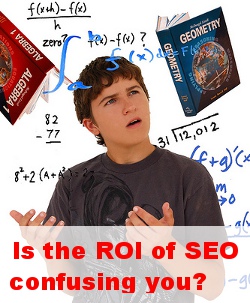
Have you ever heard the term “Pay now, play later”? Sure, it probably sounds familiar, right? It means that you pay your dues, and then, cash in your rewards later. Just ask a successful business person about this, or ask a parent. Most parents try to instill this mentality in their kids with something like “Do your chores, and then collect your allowance.”
This old school work ethic is a popular way that success is taught, even at the lowest levels of education, but we have a new school, now. We have a school that teaches success in overtly misleading ways.
It is astonishing how many people approach me with their marketing concerns and have this all backward, so I decided to share some thoughts with you. Not just thoughts, but experience … earned experience. I see it a lot more in small companies, but no size of company is immune, and we can witness this in Wall Street news stories every day. It is the needle that makes economic bubbles of all sizes burst.
Is Your Company a Job, a Career, or a Slush Fund?
Let’s have a glimpse at reality. You are probably not wealthy. Oh, you may even be “rich”, but I am a numbers guy, and I’m betting that you didn’t just send your butler, Charles, to bring you another chilled bottle of Dom Peringnon and a dish of beluga caviar.
The fact that you have read this far should perhaps tell us both that you have some serious moments of introspection, trying to figure out why all of the purchasing public does not understand the things you see so clearly. Your stuff is the best on the market, but yet, Charles is still just bringing you another Bud Light and some pretzels.
What in the heck is wrong with this picture? Well, here’s a tip: Charles isn’t messing it up … you are!

Yes, I know How Easy it Can Be
I am amazed and amused by how often I see business leaders rip off their own future to have some of that fun right now. They are playing now, and paying later. It is a lazy formula for disaster, but very popular.
I’m not going to claim that I am innocent. I have wasted more money than some small countries, so I know how easy it can be to rob yourself. I am trying to warn you and encourage you, so I hope you take this seriously.
People who treat their company this way are often paying quite dearly for it, with “opportunity cost“. It is worth being conscious of this, whether you are that business leader, or just a random employee behind the scenes. Either way, it can significantly screw up your future to ignore this behavior in a company.
Let’s Think About Opportunity Cost
Opportunity cost is the cost of all the missed opportunities that companies endure, and the examples are abundant. In simple terms, just try to add up the lost potential for referral business for every customer that goes elsewhere. Then, imagine the loss of market share over time, as their referred business sends referrals to the competition … and so on.
I see a lot of people damn near stroke out and die right in front of me when I tell them how much money they should logically be investing in their marketing. It really scares the heck out of a lot of people. Why does it scare them? Probably because, based on their limited experience, they imagine a marketing budget as risk capitol, rather than understand it as the most mathematically and scientifically sound thing they can do for their company. Many people are fantastic at their job, but if you throw them into marketing, they get ripped to pieces. They already saw failure, and they don’t need another financial bloodbath like that!
In case you missed that link I offered up a moment ago, let me tell you what Wikipedia says about opportunity cost. If you think about it, this should be what really scares companies. Brain-up for a bit … here you go:
When you look at it this way, it really sounds expensive to ignore the best possible alternatives, right? You bet it is! It is money that is flowing right on by and floating somebody else’s yacht while Charles gets your canoe ready for you.
How Does Social Media Add Emphasis?
Social media marketing is so frightening to some businesses that they are afraid to invest in it. Others are taking great advantage of the medium. If you look at the vast difference in potential opportunity cost between the two options, you can see how it emphasizes the loss or gain at both ends of the spectrum.
I want to be fair here, and give you an upside and a downside look at this. There is an amazing assortment of people to meet, interact with, and socialize with in the realm of social media. There are a lot of creative ways to gather market data and promote products and services using social media, as well. It can lead a company to great opportunities of all sorts. It can land you a great new customer, employee, or even a wife, three kids, and a corporation.
Social media is also very misunderstood by many, and from a marketing standpoint, a lot of people would like to imagine it as “free marketing”. Even just today, I was introduced to somebody, and I couldn’t make this up if I had just dosed myself like an under-aged hooker in a war zone … an exact quote was “The beauty of Mark is that he is the best and he’s free!”
Are you kidding me? I don’t even begin to market a company without a bare minimum … and I mean an “I owe you big time for saving my life from that charging grizzly bear” retainer fee of $5,000. It is usually a boot full of bear piss and swollen underpants full of “oh crap” more than that.
Now, although I would argue that she may have meant “free”, in the sense that I will not take money from a company unless I am confident that we can work well together and that I can provide them a huge return on investment … I’ll give her that. If she meant that somebody can get a lot of value by sucking up some of my experience like drinking free grape soda through a garden hose, that’s cool by me. She means well, and she knows that I do, too!
The cost of business is frightening and often frustrating, but only until you understand that a business is an investment. It requires tough decisions, and a good investment and reinvestment strategy. Making money takes money, and continuing to miss opportunities by seeking a cheap solution is like trying to dig your way out of a hole.
Social Media Can Destroy a Company
There, I said it … social media can destroy a company. It may not hit all the major news outlets, but I would put a good bet that it has helped more than a few into an earlier bankruptcy, or a complete failure.
It sounds crazy, right? This amazing saving grace we call the Internet could actually do harm to a company? It is very true, and it really happens. It is often a last refuge of absurd hope that setting up social media profiles will help a company out of trouble, or that this magnificent Internet can absolve a company from making good business decisions.
When I see people with starry eyes about the easy money online, it really brings back days in the early 2000’s when I was marketing for an Internet services company. It sounds a lot easier than it really was. I was marketing wholesale services to Internet access providers and web hosting companies. In the instance of my most satisfying online success story, I frequently had to lift the CEO by the ankles and shake him for every coin in his pockets to get the investment money needed to ensure his success.
A few years into the project, he could actually make better decisions about the corporation. He eventually even set his sails toward a young retirement, and after many years of paying heavily, he started playing (like a rock star). He paid himself handsomely. The corporation allocated $250,000 per year to fund his race team, $50,000 per month for “other miscellaneous business expenses”, and set him up pretty nicely. When he decided to buy a new home and asked the banker and accountant if he was spending more than he should, they literally said “If you want to buy every house on both sides the street, we will be happy to finance it for you.”
So, surely with an income in the top fraction of a percent of money earners in USA, and worldwide, that is a reasonably sensible time to stop investing in your company and soak in some significant leisure. A leader must eventually enjoy the lion’s share of the rewards someday, after all.
Oh, but there is still an “Unless Clause”, which explains that unless you are zombie-stupid, or high on arrogance, you must keep investing it well.
Damn it like mad, but the worst scenario still happened to my client. Corporate suppliers started laying off, killing services, and slaughtering his customers. He ended up losing millions in corporate equity, going back to working hard to earn a living, and teaching people like you to invest well in your company … even until the point when it nearly breaks you.
If you wonder how important it is to invest wisely today, to see a good future tomorrow, just ask that CEO about it. He has built many companies into huge successes. Best of all … well, aside from the fact that he is absolutely not free, you can reach him right here.
If you want to know how much it really takes to be successful, or how much it can hurt to stop looking ahead, you need to read the book “Living in the Storm“. If you were paying any attention at all, you will recognize the author. 😉
Photo Credit:
Playing in the Fountain by Tim Schapker via Flickr
Podcast: Play in new window | Download



